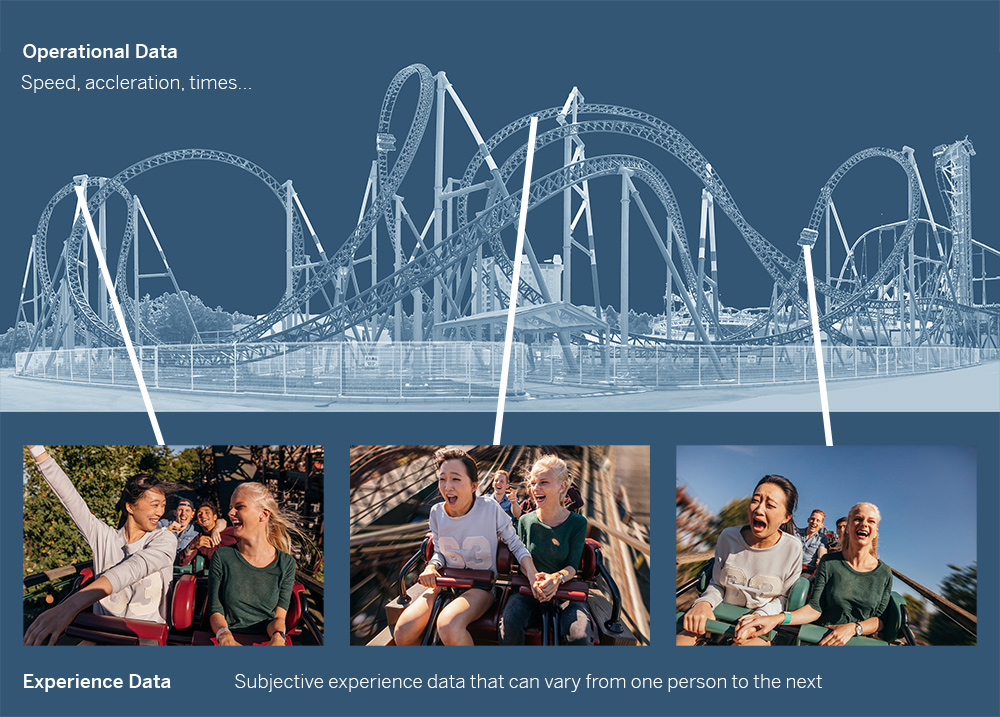SAP has announced its intention to acquire Qualtrics, a global pioneer in the area of experience management (XM) software.
Experience management is the process of monitoring every interaction people experience with a company in order to discover opportunities for improvement.
For decades, SAP has been the leader in business applications that generate and leverage operational data (O-data) — hard numbers like costs, accounting, and sales — to inform their business decisions.
But while operational data gives you an idea of what has happened, it only provides limited insights into why it happened — especially when talking about the customer experience.
To get the full picture, you need to understand customers’ thoughts and emotions as they interact with your company by gathering and analyzing so-called experience data (X-data).
For example, imagine that you are in charge of a roller-coaster ride. The operational data is all the hard numbers from ride itself, including the number of riders, and speed and acceleration at each point. But this gives a very limited view of what the customers ultimately care about: the subjective experience.

In the pictures above, we can see two riders who are having a very different experience. While the person on the right seems to be enjoying the whole ride, the person on the left shows a range of emotions from elation to fear. Gathering this type of data is clearly essential to optimizing the roller-coaster experience.
Experience management is about combining O-data and X-data to ensure that every business decision is based on both hard facts and soft intangibles.
It’s a key step in the move from older customer relationship management (CRM) platforms to new customer engagement platforms that optimize the full end-to-end customer experience.
Organizations in every industry are moving from selling standard products to customized pay-as-you-go service experiences. For example, Hilti, a Swiss producer of power tools, has introduced a series of tool-related services for professionals, using sensors, applications, and the SAP Leonardo platform.
Doing this successfully requires new business models and moving beyond traditional standalone CRM systems. In order to provide a fully personalized experience, organizations require seamless coordination between the “front office” systems such as business-to-business ecommerce and the “back office” systems such as logistics, finance, billing, and workforce resources.
And of course, the overall customer experience also depends on the perceived quality of products sold and employee satisfaction. The Qualtrics platform allows organizations to manage the four core experiences of business—customer, product, employee and brand—on one platform.
Whatever business you are in, your prospects can now easily find out the true value of your products and services, from your existing customers, with just a few clicks.
In an era of digital transparency, it’s clearer than ever that “experience matters.”
The combination of Qualtrics expertise and SAP’s leadership in business applications promises be a huge step forward in experience management for companies around the world.
